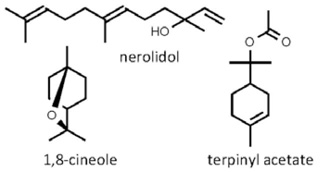 Aframomum corrorima
Aframomum corrorima
korarima • Ethiopian cardamom
Back to “Spices: cardamom, Ethiopian (Aframomum corrorima)s; Ethiopian cardamom (Aframomum corrorima)s; korarima (Aframomum corrorima)s”
Aframomum corrorima (A. Br.) Jansen (Zingiberaceae); Ethiopiese kardamom (Afrikaans); korarima (Amharic); korarima, cardamome d’Ethiopie, poivre d’Ethiopie (French)
DESCRIPTION Ethiopian cardamom or korarima is the ripe or near-ripe seeds of the korarima plant, usually sold enclosed in the dried fruit. These are smooth, shiny brown and a few (3–5) mm (ca. ⅙ in.) in diameter. They have a distinctive sweet smell (when crushed) and a delicious mild sweet spicy taste very similar to cardamom.
THE PLANT A slender, leafy perennial of up to 2 m (ca. 6 ft) tall, with thin, fleshy stems and broad, oblong leaves arising from a creeping rhizome.1 Attractive pink flowers are borne near the ground and are followed by bright red, fleshy fruits containing numerous seeds.
ORIGIN The use of korarima is well known only from Ethiopia and Eritrea, where it is an important spice and an essential component of the traditional cuisine.2 The plant is thought to be endemic to Ethiopia (and perhaps Sudan) but it may also be present in northern Kenya, western Uganda and Tanzania.1 The spice is exported to a limited extent, especially to Sudan, Egypt, Iran and India.
CULTIVATION Plantations are limited to Ethiopia (especially rain forests in the highlands of the southwest) and Eritrea but the spice is also wild-harvested to some extent. Plants can be grown from seeds but a quicker option is to divide the rhizomes.2 High humidity, mild temperatures and some shading are required.2 Flowering and fruiting occurs almost throughout the year.
HARVESTING The fruits turn bright red when they are ripe and ready for harvesting and drying. They are hand-picked and dried in the shade, resulting in a pale grey, bottle-shaped product that is sold throughout Ethiopia. These fruits closely resemble those of Melegueta pepper but they are much larger and the seeds are smooth.
CULINARY USES Korarima is an important ingredient of berbere, awaze, mitmita and other Ethiopian spice mixtures.2,3 Traditional berbere comprises 1½ cups korarima, 2½ cups dried chili, ½ cup each of salt, red onion and garlic, 4 teaspoons each of nigella, ajowan and ginger and 1 teaspoon each of cloves, black pepper, cinnamon, coriander, savory, cumin, fenugreek seeds, sesame seeds and basil (and/or rue). Korarima is traditionally used to flavour coffee2,3 and can be used in the same way as cardamom (or in combination with cardamom to increase the complexity of the flavour).
FLAVOUR COMPOUNDS The essential oil contains cineole, terpinyl acetate and nerolidol as the main chemical compounds but also sabinene, neryl acetate, geraniol, β-pinene, α-terpineol and terpin-4-ol.4,5 The seeds are chemically similar to those of cardamom (Elettaria cardamomum) but the aroma-active compounds do not appear to be known.

NOTES The seeds are used in Ethiopian traditional medicine as tonics and carminatives.2,3
1. Lock, J.M. 1997. Zingiberaceae. In: Edwards, S., Demissew, S., Hedberg, I. (Eds). Flora of Ethiopia and Eritrea, Vol. 6, pp. 324–329. National Herbarium, Addis Ababa and University of Uppsala, Uppsala.
2. Jansen, P.C.M. 1981. Spices, condiments and medicinal plants in Ethiopia, their taxonomy and agricultural significance. Agricultural Research Reports 906. Centre for Agricultural Publishing and Documentation, Wageningen.
3. Demissew, S. 1993. A description of some essential oil bearing plants in Ethiopia and their indigenous uses. Journal of Essential Oil Research 5: 465–479.
4. Abegaz, B., Asfaw, N., Lwande, W. 1994. Chemical constituents of the essential oil of Aframomum corrorima from Ethiopia. Sinet: Ethiopian Journal of Science 17: 145–148.
5. Başer, K.H.C., Kürkçüoglu, M. 2001. The essential oils of Aframomum corrorima (Braun) Jansen and A. angustifolium K.Schum. from Africa. Journal of Essential Oil Research 13: 208–209.